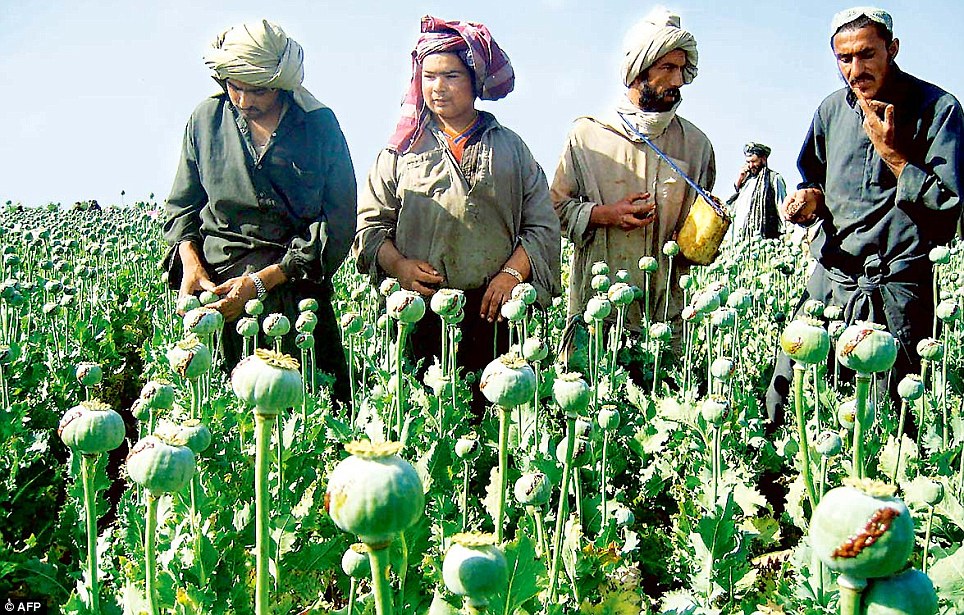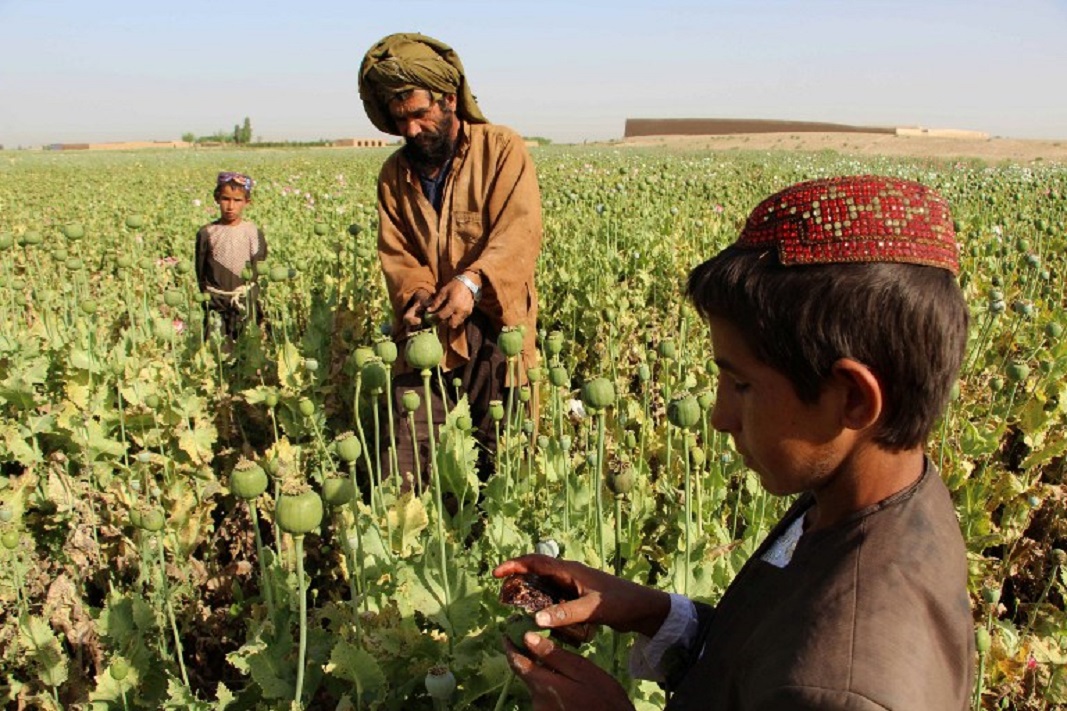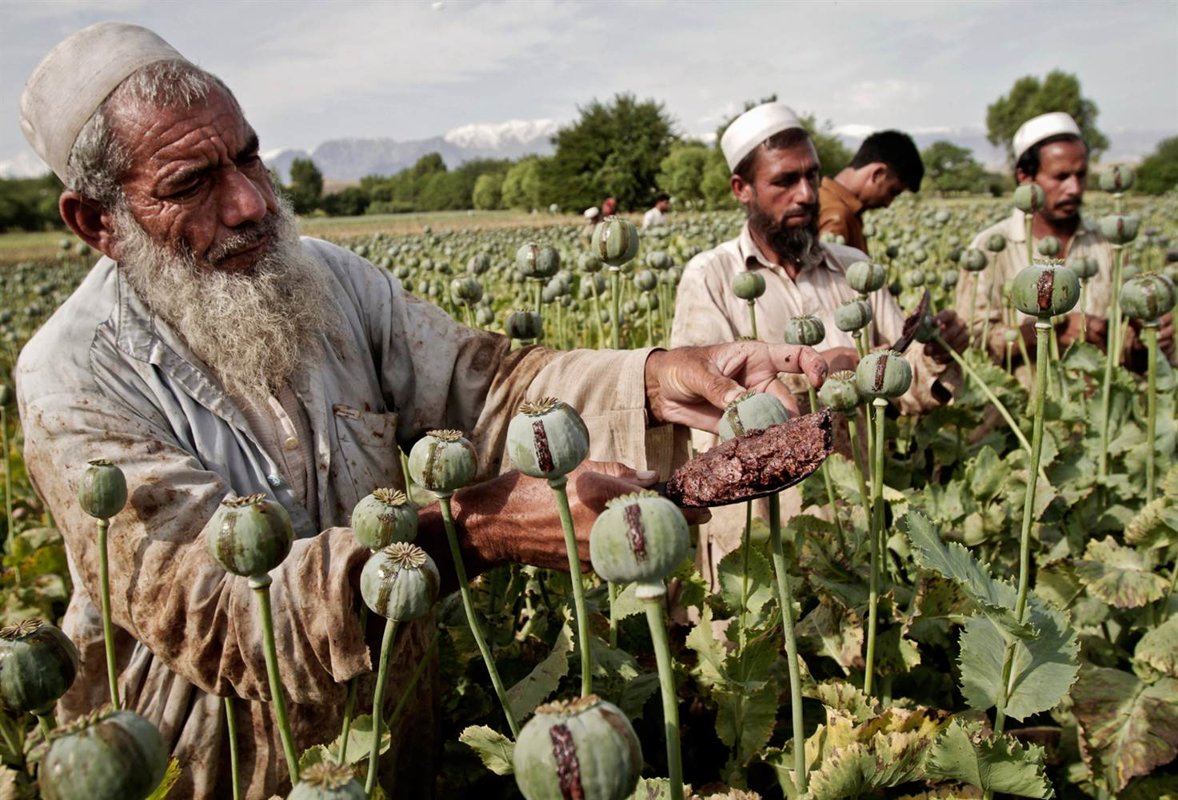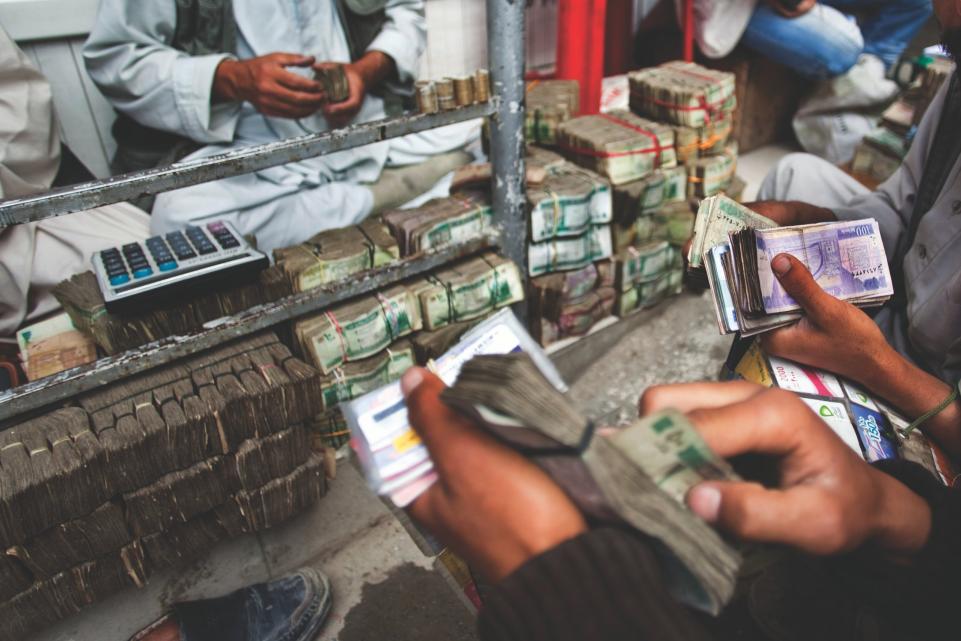THE TALIBAN CONTROL OF HEROIN DRUG PRODUCTIONS IN AFGHANISTAN , AS THE TALIBAN RELIES MORE AND MORE ON DRUGS.THE OPIUM PRODUCTION HAS GROWN, THE TALIBAN HAS ASSUMED A BIGGER ROLE IN IT.DERIVING MUCH OF ITS INCOME FROM DRUG TRADE!


 The
Taliban which banned poppy cultivation when it ruled Afghanistan now
appears to wield significant control over the war-torn country’s heroin
production line, providing insurgents with billions of dollars.The
southern province of Afghanistan, is not just the larger producer of
opium but also the most restive province in the country. The armed
insurgents continue to create problems for the government forces in the
province.Drug smugglers in connivance with armed opposition groups are
engaged in fierce armed clashes.
The
Taliban which banned poppy cultivation when it ruled Afghanistan now
appears to wield significant control over the war-torn country’s heroin
production line, providing insurgents with billions of dollars.The
southern province of Afghanistan, is not just the larger producer of
opium but also the most restive province in the country. The armed
insurgents continue to create problems for the government forces in the
province.Drug smugglers in connivance with armed opposition groups are
engaged in fierce armed clashes.
From poppy to heroin, Taliban moves into Afghan drug production. The Taliban which banned poppy cultivation when it ruled Afghanistan now appears to wield significant control over the war-torn country’s heroin production line, providing insurgents with billions of dollars.In 2016 Afghanistan, which produces 80 percent of the world’s opium, made around 4,800 tonnes of the drug bringing in revenues of three billion dollars.The Taliban has long taxed poppy-growing farmers to fund their years-long insurgency, but Western officials are concerned it is now running its own factories, refining the lucrative crop into morphine and heroin for exporting abroad.The Taliban need more money to run their war machine and buy guns, that is why they have taken control of drug factories.“More than 90 percent of all heroin consumed in the US is of Mexican origin. But in Canada more than 90 percent of the heroin consumed is of Afghan origin.Taliban, drug lords await $770m opium bonanza,Afghanistan is a hot spot for the Taliban, it’s the reason we are currently in a war over there. However, the main funding for the Taliban comes from the opium they grow in Afghanistan. They sell these drugs to private groups and other terrorist organizations. This money then goes to fund their battle against our troops. Currently the United States government is pursuing the possibility of intervening and spraying down the areas that grow the drugs with a chemical to kill them. They did this same thing to an extent in Columbia South America. The fact that drugs are funding the Taliban is an undisputed fact and needs to be addressed; however, is this route the one we should be taking on the issue? To answer this question we need to look at what happened when we did this before in Columbia. When we did begin the eradication attempts on Columbia, things went smoothly for a time, until we started noticing the aftereffects. Several things happened, firstly allot of the Columbian economy was based on the illegal trade of the narcotics. When we started killing the drugs their economy began to tumble causing economic crisis. Secondly the farmers of the drugs simply either replanted in another unknown hidden location, or they moved to a different country. This caused the drug crisis to proliferate. So, if we apply what we have seen in Columbia to Afghanistan, it’s clear that there must be another better option for conquering the Taliban and the drugs they grow.Apparently unable to defeat the Afghan government with conventional tactics alone, Taliban and terrorist groups operating in the country now try to sway the hearts and minds of the local population in their favor, seeking to drive a wedge between civilians and security forces.Everything they harvest is duly processed inside the country. They receive more revenues if they process it before it has left the country.Obviously we are dealing with very loose figures, but drug trafficking amounts to billions of dollars every year from which the Taliban is taking a substantial percentage.Poppies, which are cheap and easy to grow, make up half of Afghanistan’s entire agricultural output.Farmers are paid about $163 for a kilo of the black sap the raw opium that oozes out of poppy seed pods when they are slit with a knife.Once it is refined into heroin, the Taliban sells it in regional markets for between $2,300 and $3,500 a kilo. By the time it reaches Europe it wholesales for $45,000, according to a Western expert who is advising Afghan anti-narcotics forces and asked not to be named.The first step before it becomes heroin, such as acid anhydride, points to an escalation in Taliban drug activity.Sixty-six tonnes of the chemicals were seized in all of 2016, while 50 tonnes were impounded in just the first six months of 2017.

 How drugs finance Taliban’s war in Afghanistan,how the Afghan heroin trade is fuelling the Taliban insurgency.Without
any doubt, there are local, regional and even international mafia
groups involved in drug business inside Afghanistan.If they manage to
crack down on local mafia gangs.
How drugs finance Taliban’s war in Afghanistan,how the Afghan heroin trade is fuelling the Taliban insurgency.Without
any doubt, there are local, regional and even international mafia
groups involved in drug business inside Afghanistan.If they manage to
crack down on local mafia gangs.
